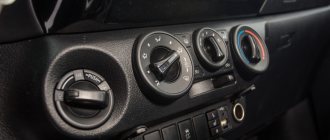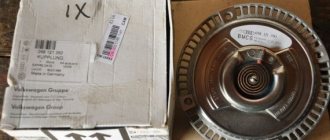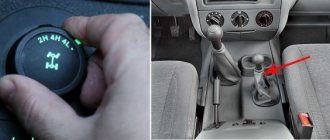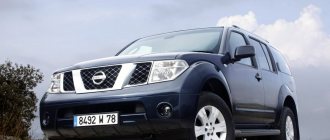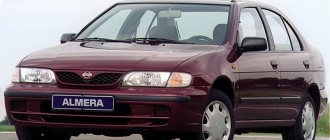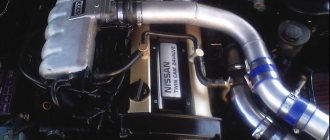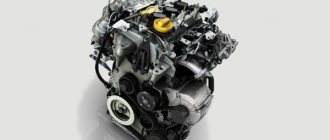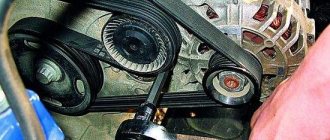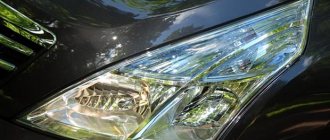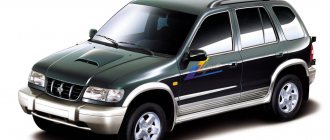NISSAN PATHFINDER R51 and all-wheel drive features
Home › News › NISSAN PATHFINDER R51 and all-wheel drive features
This car is originally an SUV, and the all-wheel drive system is fully implemented on them.
The car has a classic permanent rear-wheel drive. The transfer case is multi-mode. Two types of transfer cases were installed - two types of all-wheel drive. Let's call them - switchable and non-disconnectable. The second is implemented on PATROL Y62 and INFINITI QX56 Z62 bodies. We will not consider them. But on the R51 PATHFINDER it is easy to determine the type of all-wheel drive by its mode selector. In our case, there should be position 2 WD, then AUTO, then 4HLC (locking) and the last mode 4 LLC low with locking. The last mode must be used very carefully and with an understanding of what you are doing. For 95 percent of the rest, only two modes are needed - 2 WD and AUTO. This way you will be less likely to damage your car and get into an accident.
But in AUTO mode there are also nuances. This car has a complex transfer case.
There is a multi-plate clutch package like on XTRAIL, but it is controlled by oil pressure, which is created by an electric pump at low speeds, and by a mechanical one at high speeds. Regulated by pressure solenoid. There is a pressure sensor, temperature sensor, fine filter and a complex valve system. All this allows the all-wheel drive control unit to supply the necessary torque to the front driveshaft, thereby forcing the front wheels to help the rear wheels drag the car off-road.
Likewise, this car has electronic all-wheel drive, which can be damaged, and if the electronics fail, the car turns into a regular single-wheel drive. Only, unlike XTRAIL, it becomes classically rear-wheel drive, and XTRAIL is front-wheel drive.
Operating this machine involves monitoring the oil level in the transfer case. It has its own oil and control levels. In addition, in the parameters of the all-wheel drive control unit there is an interesting setting of the initial torque on the front driveshaft. If we switch to AUTO, then torque from the transmission is supplied to the front driveshaft.
As we see, there are 3 levels of programming. 0.2 – 0.3 – 1.2 kgm.
This is the level of initial torque on the front axle, even if we are not going anywhere...
This is 2WD mode, as we can see - nothing is transmitted to the front axle, the car is a classic rear-wheel drive. In this mode, steering is best, tire wear is minimal, and fuel efficiency is maximum.
Steerability is the correspondence of the turning trajectory to the position of the steering wheel. In any all-wheel drive mode it gets worse. Understeer appears. When cornering in all-wheel drive, due to the torque on the front wheels, the car tries to be thrown out of the corner, increasing the radius of this corner. And the greater the torque on the front wheels, the worse the steering and the larger the turning radius. Therefore, when locked in 4HLC mode, the car will have maximum understeer and will be thrown out of the turn, straightening its trajectory. The main reason is that all wheels travel a different path during a turn. When the front and rear axles are locked together, we disrupt the path of the wheels, aligning them.
Therefore, the electronic all-wheel drive system in AUTO mode generates torque smoothly to the front wheels, trying to minimize understeer. Otherwise, when locked, the angular velocities of the wheels are aligned and they try to travel the same path.
And this is the AUTO mode, where torque is supplied to the front axle.
When operating on different soils in AUTO mode, different initial torques are provided for the front wheels. If the car is operated mainly on hard soils and asphalt, it is enough to set it to 0.2 kgm. Central Russia - 0.3 kgm, for those who constantly drive in snow and mud - 1.2 kgm. It has been noticed that owners who do not drive off the asphalt and have a programmed 1.2 kgm have severely damaged drive shafts and cardan shafts. Excess torque quickly wears out the transmission.
Similarly, it is not recommended for the same reason to drive in 4HLC mode. Activating a lowered car with locking is generally undesirable, and there is no such need in urban conditions. There are strict conditions for this mode, failure to comply with which will quickly damage the transmission.
You can and should switch modes while driving from 2 WD to AUTO and back in accordance with road conditions. When driving on hard surfaces, always choose 2 WD. If there is snow and ice on the road, AUTO with a torque of 0.2 -0.3 kgm is sufficient. If you have already decided to drive off the road into snow and mud, then 4HLC. The latest 4LLC mode is for those who have thoroughly studied the owner's manual.
Therefore, during maintenance, you always need to go to a specific menu of the 4WD unit using the CONSULT3 PLUS scanner to check this parameter and select the desired one.
Used Nissan Pathfinder R51: antifreeze in automatic transmission oil and shameful V6
Transmission
The Nissan Pathfinder can have both an automatic transmission and a manual transmission.
There were fewer of the latter boxes: they were installed only on European cars with diesel engines before restyling. And from a reliability point of view, a manual transmission is not the best choice in terms of reliability, but it’s good to have a choice. The situation with automatic transmissions is also quite simple: before restyling, all engines were equipped with a five-speed gearbox, and after it they began to offer a newer seven-speed gearbox with a three-liter diesel engine.
The drive, of course, is all-wheel drive, although rear-wheel drive “Pafikas” from the USA are also occasionally found. But think about it, why do you need such a car without all-wheel drive?
The transmission layout is extremely conservative: a transfer case is docked to the gearbox, from which two cardan shafts drive the front and rear axles.
Nissan Pathfinder '2004–10
At the front, the gearbox is assembled with an intermediate shaft to equalize the length of the drive shafts. Both the front and rear driveshafts are completely unsophisticated. These are cardans with a resource of 60-100 thousand, depending on operation. As a replacement, you can buy “eternal” crosspieces with grease fittings or regular maintenance-free ones.
Articles / Used Nissan Pathfinder R51 SUV: crooked frames and flying wheels The age of large, large frame SUVs is slowly coming to an end. What to do: trends in the development of the automotive industry run counter to the craving of some segments of the population for frame monsters. Class… 16620 0 0 08/29/2018
The rear gearbox is somewhat weak. It gets quite hot, and the service life of the seals is not too long. And if you haven’t moved it higher and haven’t washed the breather, then the chances of killing the gearbox become very real. The hardware itself is quite reliable, but it is better to check the gearbox for “fogging” at every maintenance and before every long trip. And of course, it is advisable to keep the breather clean.
The front gearbox is less loaded, but requires the same care. In addition, its suspension requires attention. If you do everything wisely, then these units are enough for 300-400 thousand mileage.
But with a barbaric attitude they can be destroyed even earlier, after which replacing the bearings may not be necessary. During a test drive, you can clearly hear dead crosspieces and a problematic gearbox, so pay attention to these sounds during your test drive.
The transfer case is a more complex and troublesome thing. It is here without a center differential, but connecting the front axle with a clutch pack allows you to implement an on-demand mode - “on demand”. Transmission modes are 2H, 4H, 4L and Auto. You can drive on asphalt only in 2H and Auto modes, but all modes with hard-wired all-wheel drive on asphalt cannot be enabled.
An increased load on the transfer case provokes failure of the bearings first of all. They are inexpensive here: in shanks they cost 6207/C3, the price of which is approximately 300 rubles. The internal bearings are more expensive, but they usually wear out later.
When operating in Auto mode, the service life of transfer case bearings is usually 90-125 thousand kilometers; in 2H mode on hard surfaces, all elements last a long time, more than 300 thousand, but literally one season in 4H mode can lead to the death of not only the shank bearings, but also friction wear and chain stretching.
Nissan Pathfinder '2004–10
Unfortunately, the transfer case on cars with a three-liter diesel engine is slightly different. It does not have a 2H mode, which means that no matter how much you want to extend the life of this box, it is impossible.
In general, the design of the transfer case here is quite interesting. The clutches are not pressed by an electric drive, but by oil pressure, for which there is an oil pump in the rear shank. The oil, of course, needs to be changed regularly. When starting from a standstill, only one axle works at the first moment, which does not have the best effect on maneuverability in loose soils. Downshifting is controlled by an external electric drive.
In general, all the elements of the transfer case are not very expensive: a chain from BW costs about 11 thousand rubles, bearings are generally cheap, drums cost 8-12 thousand rubles, clutches are also not expensive.
On transfer cases before 2008, the front flange was not very good; it is better to replace it, thereby extending the life of the seals.
If you ignore the vibrations and stubbornly drive with a rigidly connected all-wheel drive on asphalt, you won’t be able to get away with an easy repair. In addition to damage to the bearing seats, you can cause overheating of the transfer case, damage to the chain and drums, and even a screwed housing. Do not skimp on small repairs and do not end up replacing the entire unit. Although the design is quite interesting, it has zero “fool resistance”, and it is not very suitable for constant use on slippery winter roads. And this is not surprising: the machine is primarily designed for operating conditions in the USA.
The FS6R31A series manual transmission works a little rough, but is quite reliable. This is a box of commercial equipment with a huge resource. The disadvantage of cars with “mechanics” is that they are let down by a weak dual-mass flywheel and a weak clutch.
Nissan Pathfinder '2004–10
Articles / Used cars KIA Sorento l with mileage: homemade crosspieces and “failed” engines On the secondary market, the first generation Sorento looks quite tempting: a good interior, not the poorest configurations, and the price for a frame SUV is quite affordable. True, in the first... 18791 9 0 08/09/2018
The clutch here for most drivers cannot last a hundred thousand, it’s good if it lasts sixty. Moreover, replacement is quite expensive: you need to remove two driveshafts and the transfer case along with the gearbox. Sometimes they just hang the engine. This is three times cheaper and much faster, but there is a chance of breaking the fan and pipes.
The flywheel brings closer to a hundred thousand mileage, the maximum can last up to 180-200, but definitely no more. It is dual mass and is not cheap. In advanced cases there is usually nothing left to repair.
There are two series of automatic transmissions on the Pafik: either the five-speed Jatco RE5R05A, which was installed with all engines except the V9X, or the seven-speed RE7R01B with a three-liter diesel engine. All boxes are very reliable, and this is a rare case when a seven-speed gearbox is even slightly more reliable than the old five-speed gearbox. However, first things first.
The five-speed Jatco RE5R05A is almost the same as, for example, on the KIA Sorento . On Spanish-assembled cars before restyling with 2.5-liter engines, its modification RE5R01A is found - weaker, but structurally the same.
The Jatco 505 is a very sturdy box with a classic design. Its huge resource is limited mainly by the resource of the gas turbine engine blocking linings and the wear of the brake band. With a mileage of 180-200 thousand kilometers, you will have to undergo what is usually called “minor repairs”
Racers occasionally have problems with the OverDrive drum being deformed by the brake band.
Otherwise, one can note the sensitivity of the box to gaps in the clutch packs. If there is wear, the clutch sets are replaced entirely.
And there is also an electronic valve body board (code 319446) that is very sensitive to overheating and voltage surges. The price of a new part is about 14 thousand rubles, but usually it can be repaired.
With careful operation, regular oil changes and timely repairs of the gas turbine engine, the service life of the box as a whole is more than 300-400 thousand kilometers. Before this run, only minor failures of sensors and the most loaded solenoids are possible.
Unfortunately, the peculiarities of Russian operation take their toll, and there are quite a lot of boxes that have been rolled to zero. The reasons are simple: we change the oil only when the gearbox is already ringing, they drive harshly, they rev up the engines... And, of course, they sharply reduce the service life of the trailer and off-road driving.
Radiator
price for original
14,560 rubles
Another feature is related to the box cooling system on the Pathfinder. A combined automatic transmission cooling scheme is used here, where a fairly large automatic transmission radiator is combined with a heat exchanger in the lower tank of the main engine radiator. There are no complaints about the effectiveness of this scheme. But on cars manufactured before 2007, the heat exchanger often leaks due to corrosion. On later ones, the probability is also high, but on Pathfinders released after 2010, such cases are rare.
The simplest solution to the problem is to install a bypass. Cooling is routed to an external radiator, bypassing the common heat exchanger. Usually this is enough to maintain normal temperature conditions of the box in urban conditions and on the highway. But off-road and when dragging a trailer, this is not enough, and the box overheats. Therefore, the best solution is to install another “sandwich” radiator in addition to the standard one, preferably with an electric fan.
Well, what if we leave the factory circuit? Even a small amount of antifreeze getting into the oil “soaks” the clutches and they contaminate the inside of the box. If the leak is massive, it will also jam the bushings with the pump, and the dirt collected in lumps will destroy the turbine engine blades. With a standard “rider”, after a leak, the box is only suitable for a landfill: there are no intact parts left in it, and what is not damaged by the liquid is clogged with destruction products. So it’s better not to risk it and turn off the cooling circuit in the main radiator, even if the car is still relatively new.
The Jatco RE7R01B automatic transmission is an improved version of the five-speed gearbox. The mechanics were “lightened” a little, but the structurally weak brake drum assembly was eliminated, and the gas turbine engine blocking lining became multi-disc. True, along the way, oil contamination sharply accelerated, and the design itself became more complex and more sensitive to assembly errors and oil purity. But overall its reliability has increased. True, it is still better to change the oil not according to the regulations, but once every 30-40 thousand kilometers, install an external filter for the oil and not overheat the box. The automatic transmission is relatively new, there are practically no cars with very high mileage and this “automatic”, so we can only note that on average up to 200 thousand this design holds up very well and is purposefully difficult to kill.
The features of the cooling system are the same as those of the previous five-speed unit. The chances of the heat exchanger depressurizing are minimal, but they exist. Its cause is usually mechanical damage to the fittings during off-road driving or repair work. It’s better to turn it off and forget, or even better to modify the cooling system by installing a new radiator and filter with a thermostat.
Motors
The set of engines on the Nissan Pathfinder is very good. Those who prefer simplicity and power will like the 4-liter VQ40DE and 5.6-liter VK56DE. If you change or remove the catalysts in time and do not forget to change the chains, then more than 300 thousand mileage, even on a heavy car, is guaranteed.
The YD25DDTi turbodiesel plays in the “junior” power category. These are the most powerful versions of this engine with 170 and 190 hp. It turned out not so reliable, but economical.
After restyling, a three-liter V6 diesel V9X series appeared, very powerful and with a significant boost reserve, with very low vibration load for a diesel engine, but with its own new problems.
Under the hood of Nissan Pathfinder '2010–14
The cooling system of all engines uses a fan with a viscous coupling, which you must remember to update every 50-80 thousand kilometers, otherwise the engine can overheat.
All gasoline engines have very weak catalysts, which are best changed or removed before they kill the piston group of the engine.
Diesels after 2007 are equipped with an advanced exhaust system with a particulate filter-catalyst. This element is also not tenacious in our conditions and creates a lot of additional troubles.
Gasoline engines
Gasoline engines are not particularly fragile, but you need to keep an eye on the catalysts and timing belt knocks. Otherwise, almost exemplary reliability and maintainability. Here I agree with those who consider these engines to be better than even the Toyota GR series. But... if not for the catalysts. Unfortunately, it is they who usually spoil everything, causing increased wear of the piston group after 120-150 thousand mileage.
The life of the chains on the V6 is higher than on the V8, and in general the eight-cylinder engine is more troublesome.
Under the hood of Nissan Pathfinder '2007–12
Gasoline engines are boosted well, and according to very simple recipes. This is not very relevant for the “Pafik”, but there are still those who like to “chip” the engine of an SUV. Remember: after boosting the engine, the automatic transmission and rear gearbox are completely useless. And in general, 400-plus horsepower is too much for such a chassis, and the 5.6-liter engine is often boosted even to 480-500 hp.
Diesel engines
The most common Pathfinder engines are 2.5-liter diesel engines in all different versions. A highly-powered diesel engine with Common Rail in a heavy car shows good performance in terms of traction and fuel consumption, but it literally wears out. Moreover, a heavy SUV often drives along the highway and crawls through the mud.
Before restyling, the engine power was 174 hp. on Euro 4 engines, after restyling - 171 hp. Turbine - Garrett GT2056V with conventional vacuum regulation. After restyling, the 190-horsepower engines were equipped with the latest expensive Borg Warner BV45 turbine with variable geometry and electric damper drive.
Nissan Pathfinder '2004–10
At the same time, the motor was modified to increase reliability. First of all, to reduce the number of problems with cylinder head cracking. On pre-restyling cars, cracks in the glow plug channels appeared frequently, and cracks at the valve seats were also not uncommon. The slightest overheating or prolonged high load on the highway led to a breakthrough of gases in the cooling jacket. With a reduced level of antifreeze, literally after five minutes of running the engine under load, the head simply warps. Experienced Pathfinder owners recommend installing not the original cylinder head during repairs (even in later versions it has thin channels and is still prone to cracking), but a “cheap” Chinese SAT head costing about 40-50 thousand rubles. And you definitely need to install an additional electric pump for the Bosch cooling system.
A leak in the EGR heat exchanger brings very similar symptoms of malfunctions, but the cost of repairing it is much lower. True, often a missed level of antifreeze leads to the same damage to the cylinder head.
Nissan Pathfinder '2010–14
They know how to weld cracks, but the quality of such work is often low. Here you have to drill out the entire area with oxidation, but usually this is a difficult job and costs more than a new, non-original head. Moreover, there can be a lot of cracks.
A fairly reliable piston group and a well-developed design allow the engine to reach mileages of even 400 thousand without major repairs, but there is always a chance of getting the cylinder head repaired.
Pathfinder owners often complain about turbine whine, which is typical for cars before restyling. On 190-horsepower cars, the turbine actuator breaks. Due to a clogged particulate filter or disrupted fuel supply, its “geometry” regularly turns sour.
Nissan Pathfinder '2010–14
The injectors of these diesel engines are quite reliable, as is the preheating system, and up to 150-200 thousand mileage everything can remain original. But a clogged oil pump receiver and poor crankcase ventilation are common on cars with high mileage.
For those who like to drive at low speeds with a load, especially in cars with a manual transmission, after 150 thousand kilometers the crankshaft liners fall into the risk zone. Oil pressure is not something to joke about, and on older engines, the oil should be checked for the presence of metal shavings at every change.
Nissan Pathfinder '2010–14
It is also worth checking the oil temperature: the heat exchanger becomes dirty during long runs, and many people turn it off to avoid antifreeze leakage.
Many connections in the motor are made with sealant (for example, the lower part of the crankcase), and if silicone sealant was used during repairs, it gets into the motor in large quantities. There will be a lot of problems after this.
The timing chain drive is very durable: it usually lasts up to 250 thousand kilometers.
Motors are quite simple to repair, especially since repair sizes are available and spare parts are cheap. As a last resort, there are a lot of contract units for this SUV.
The three-liter V6 diesel engine, despite its good power, turned out to be “not very good”.
This diesel engine tends to show a good appetite for oil: the oil scraper rings gradually become stuck, and the pistons are very thermally loaded. This is very bad for a diesel engine - it can, for example, lead to “overrunning”. There are replacement oil rings on sale, but this is the only thing that can be useful. Sometimes the compression ring squeezes out, and you'll be very lucky if it doesn't jam the cylinder. It has neither repair liners nor repair piston dimensions.
There are also no bearings on sale, but they are also very necessary: the engine has very narrow crankshaft journals (albeit large diameter), the load on them is very high and the crankshaft is extremely sensitive to oil pressure. Even overheating the oil can lead to seizures.
Timing chain V9X
price for original
15,482 rubles
And one more surprise: the sealing ring of the oil filters gets into the oil pump and jams it. That's it, the engine is in trouble. The design of the filters has been changed, but oil pumps sometimes still jam.
The resource of the timing chain is offensively short: after 120 thousand you need to carefully listen to the sounds of the morning start-up, and by 150-180 thousand the chains will almost certainly require replacement.
The EGR resource is very low, and the engine is very sensitive to its problems. Simply plugging the valve will not work; new firmware will be needed.
Of course, the V6 is a powerful, compact, lightweight and economical engine. And it has almost no diesel vibrations, and the sound is soft... But it often breaks down and is not repaired. A shot block from half a million rubles is too brazen for a car that costs a maximum of a million.
Nissan Pathfinder '2004–10
When buying a Pafik with this turbodiesel, keep in mind that it is almost impossible to repair. It seems that the inserts can be selected or made to order, but here they are composite, for high loads, and ordinary aluminum ones will not last long. At a minimum, you will have to switch to more viscous oils. The rings and piston group are poor and can only be replaced with custom forgings. In general, if something breaks, the degree of “hit” is maximum.
If you want a powerful engine, it’s better to take a car with a VQ40DE: it has better traction, is quieter, there is almost no hassle with it and there are minimal risks.
conclusions
The third generation Pathfinder is not a cheap car, but overall it is quite practical. Its engines and gearboxes are mostly successful, and possible transmission problems are completely solvable.
And otherwise, the Nissan Pathfinder has no unsolvable problems, and among its classmates it looks good in terms of operating costs. But as usual, the question remains: why does a normal person need a frame and a heavy body if there is no more space and comfort inside than in an ordinary large crossover, which is much cheaper to buy and operate, but handles better and is not inferior in comfort.
Nissan Pathfinder '2004–10
If you are still sure that the frame is needed, then remember to thoroughly inspect it along with the body, as well as the features of the engines. And don’t take a three-liter diesel engine, even if you really liked it during the test drive.
Survey
Would you get a Pathfinder R51?
Your voice
Total votes:
